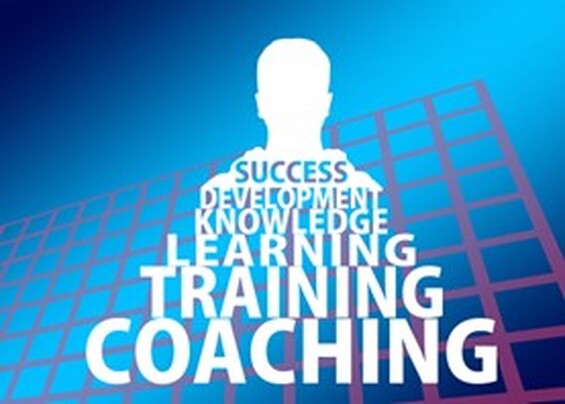Exclusive Access Granted To Our Blog!
|
Promotions help you sell more, grow your customer base, and strengthen relationships with existing customers. Use promotions effectively by planning them a year in advance, connecting them to holidays and seasons that are relevant to your audience. But how do you get the word out? A promotion won’t succeed if people don’t know about it. Here are the top 5 ways to get your promotions noticed. Social Media Social media sites like Facebook and Twitter are great for getting the word out about promotions. Alert your followers and give your promotion a hashtag so people can find it. In the days leading up to the event, create a pinned post so it’s the first thing people see when they check out your profile. In addition to promotional content, share helpful information related to the products or services you’re selling. Email Marketing If you don’t already have an email list, build one and use it for your promotions. Email is an even better way to reach people than social media because it’s personal. Your messages go straight to the customer’s inbox. If your goal is to boost retention and build relationships with existing customers, offer exclusive deals to email subscribers only. They’ll be more likely to buy because it’s especially for them. Promote with Video Video content is a powerful way to communicate with followers and potential customers. Videos perform better on social media than other types of content. You can create videos promoting your sale, as well as short videos that provide tips or advice, with mention of your promotion in the description or within the video. Team up with a Partner Team up with another business that shares your target and collaborate on promotions. This will give you direct access to their audience, significantly expanding your reach. It also lets you leverage each other’s skills and expertise. This is a great opportunity to build your relationship with new people in your network. Paid Advertising Paid advertising is an effective way to get your message in front of new people. The only downside is that it costs you money. But it can be a profitable investment if you want to aggressively build your audience. You have a variety of paid advertising options, including ads on social media or search engines. Get Started Planning Your Promos Now that you know how to get the word out, it’s time to start developing your annual promo calendar. Pick times of the year where you need to boost sales and decide which holidays are relevant to your audience – and then get planning! Want to learn more about planning, scheduling and implementing your promotions? Register for: Plan Your Promotions Master Class Tuesday, November 14, 2023 6-8PM CST Learn More HERE Pat Simes is a Business Strategist, blogger and Founder of Innovative Business Solutions and Innovate Academy. She currently resides in the Midwest and is committed to inspiring and empowering entrepreneurs to transform their vision to reality.
0 Comments
Planning promotions with a yearly calendar is a good way to achieve your business goals. Whether you want to boost sales during slow periods, or hold flash sales to motivate current customers to buy additional products, this is an effective and organized approach that gets results. It would seem like the more sales and promotions you offer, the more results you’ll get. But this isn’t always the case. If you offer too many, you run the risk of promotion overkill. Here are the top 3 reasons why you should limit your promos. Customer Burnout When you offer occasional promotions throughout the year, your customers will be excited. You can build buzz leading up to each and which could result into more sales. But if you run too many, your audience could burn out and your promotions will lose their effectiveness and novelty over time. One way to mitigate this is to mix up your promotions. Offer discounts on different types of products and services. Segment and target specific groups within your audience. Try to find the most important and relevant times of year for your promotions. Devaluing Your Brand Holding too many promotions can devalue your brand. People will see you as a business that offers cheap goods. Ideally, your customers buy from you because your products and services offer unique solutions to their problems. They love the value you offer, not just the low prices. For example, if you run a promotion once every two months like clockwork, people will wait until the next promotion to buy from you. They know you’re going to run it, so they’ll just plan their buying around the sale and never pay full price. Fewer Profits Offering constant promotions can also hurt your bottom line. If you’re always selling below the regular price, you simply won’t earn as much from your sales. You’ve put in the work setting your product pricing so that it yields a good return on investment. Promotion overkill will undermine these efforts. Promotions are a way to get a temporary burst of income when you need it. You should plan them during sales slumps when people aren’t buying like they usually do. This way, promotions won’t interfere with your regular sales. Finding the Sweet Spot Promotions are a great strategy but don’t overuse them. They should offer incredible value, not just a reduced rate. How many promos should your business run? This depends on your customers and your brand. Every target audience has their own sweet spot. Find yours by creating a yearly promotional calendar and testing it out. Act Now, Plan and Prepare Better Take action now and start planning, scheduling and implementing your promotions. Enroll in our Plan Your Promotions Master Class today. To Learn More Click HERE Pat Simes is a Business Strategist, blogger and Founder of Innovative Business Solutions and Innovate Academy. She currently resides in the Midwest and is committed to inspiring and empowering entrepreneurs to transform their vision to reality.
If you plan your promotional calendar a year in advance, this will help you generate a steady income while offering great value to your customers. When planning your promotions, there are many types to choose from. Here are 5 popular and effective promotion ideas to inspire you. Flash Sales A flash sale is a very short, limited-time offer. It can last just a few days or even a few hours. The idea is to offer a deep discount in a short window of time – and then it’s gone. Make sure that your Flash Sale is not something you offer every month just to generate sales but, something offered periodically such as twice a year to motivate people to purchase your offer. Seasonal and Holiday Sales Seasonal and holiday sales are promotions that are linked to an annual event or time of year. This includes Valentine’s Day, summertime, or ‘back to school’ sales. These promotions are effective because they’re tied to important events in your customers’ lives, making your sale relevant, memorable, and meaningful. Annual Sales Another option is to hold a major annual sale. Create a promotional event that your customers will look forward to every year. Annual sales are often used by businesses that rarely offer promotions. Choose a time of year when sales are slow. For example, if you have a dip in sales in January, this is the ideal time to hold your annual promotion. You can also use your annual promotion to fill a gap in your calendar, during a quiet time when there isn’t a relevant or exciting holiday to celebrate. Clearance Sales Clearance sales allow you to get rid of excess stock or items that aren’t selling. Offer a steep discount to motivate people to buy. BOGOF BOGOF stands for “buy one get one free.” Most commonly, BOGOF means that you’re offering two items for the price of one, but it can also refer to product bundles or free upgrades with purchase. The idea is that your customer can buy a product at regular price and get something else in the bargain. Pair products that people typically buy together, or products that can be used together, and increase the value of the BOGOF offer. Creating Your Profitable Promotional Calendar How do you put these promotional types to work? Analyze your cycle, pick the optimal times of year for your promotions, and then create the right offer for your target audience. Want to learn step by step how to plan your promotions for a quarter, six months or even a full year? This is a great time to plan for 2024. Pat Simes is a Business Strategist, blogger and Founder of Innovative Business Solutions and Innovate Academy. She currently resides in the Midwest and is committed to inspiring and empowering entrepreneurs to transform their vision to reality.
What Entrepreneurs Can Learn from How CEOs ThinkNo matter how small your company or organization, you can learn something from how CEOs think. Even if you’re a freelancer or solo entrepreneur, you can use what you learn from CEOs to grow your business and lead it like a pro. Here are the ways CEOs think differently than the rest of us.
CEOs Look to the Future A CEO has two major concerns. The first is to make sure the company is growing. They have a vision of where the company should be 5, 10, even 20 years from now. Their job is to understand all the moving parts and steer their organization to those goals. Even if you’re a freelance service provider or the owner of a simple ecommerce store, you also have to grow your business so it doesn’t stagnate. Motivating Your Team The second major concern is to motivate and inspire their team. CEOs provide leadership. If you have employees or even virtual assistants, you can keep them motivated and communicate your vision to them. Like a CEO, choose the right people, inspire them, prepare them with everything they need to realize your vision, and then get out of their way so they can use their skills to get results. Maintain the Big Picture View The CEO is the one person in a company who is uniquely able to see the entire organization from a birds’ eye view. Maintaining the big picture doesn’t mean you don’t care about details, but it means you’re not getting bogged down in all the daily tasks. You should focus on the details that are important and outsource and delegate tasks that take away time from planning your strategy for growth. Focus on Your Core Values Every business, no matter how small, has core values that define why they do what they do. There’s a reason you started your business. You wanted to solve problems and make the world a better place. A CEO never loses sight of this, no matter what else they’re doing in their business. Like the leader of a big company, you should always keep your core values in mind and act in accordance with them. Communicate Like a CEO CEOs communicate effectively. This means not just being a good communicator, but also communicating the right things at the right time. If you’ve spent time in a big organization, you know that a good CEO is responsive to their staff, but they also control communications so they have uninterrupted time to work. Strategic Thinking A CEO always has their own ideas. They can always propose something in a timely manner. They think strategically, so they always have a plan. When sudden decisions need to be made, this leader already has an idea ready to propose. They aren’t easily surprised by changes in the market because they’ve already considered every possibility and have a plan ready for each. If you can cultivate these traits in your business, you’ll see better growth and more efficient operations. Master the traits and mindset of CEOs and you’ll see immediate benefits to your business. Enroll in the course that will transform your thinking to “Think Like A CEO” Learn strategic CEO thinking. Secure your spot in our course and discover the CEO mindset that sets apart industry leaders. Don't Miss This Opportunity! Enroll NOW! Pat Simes is a Business Strategist, blogger and Founder of Innovative Business Solutions and Innovate Academy. She currently resides in the Midwest and is committed to inspiring and empowering entrepreneurs to transform their vision to reality. One of the many things that make CEOs different from the rest of us is their ability to continue learning new things. It is this accumulated knowledge and experience that allows them to lead their organization in the right direction and make key decisions. Anyone can learn like a CEO and enjoy the benefits of doing so.
Bringing It All Together CEOs have wide-ranging interests that all feed into their business decision-making. They know all the key information they need about their company, as well as their employees, their business performance, the industry, and the competition. They know a great deal not only about their business but about other topics as well. For example, they bring information from other industries into theirs. They might be following trends in other industries that they can learn from in their business. Knowing What You Need to Know Although they have casual knowledge on a variety of topics, they’re also good at determining which information is most essential. CEOs don’t have time to know everything down to the smallest detail. This is useful, for example, when holding meetings with business partners. They know what questions to ask to yield just what they’re looking for. They don’t need to know everything, but they need to know enough. Learning from Peers and Mentors Everyone learns differently, but research shows that CEOs learn in a slightly different way than the rest of us. They are more likely to learn from peers or mentors than from traditional educational materials or classrooms. They’re also more likely to be avid readers. They read about business and their industry, but also widely on a variety of unrelated topics. Failure is a Valuable Teacher One key feature of the CEO’s view on learning is how they see failure. Along the way to becoming a successful CEO, you make many missteps. Decisions need to be made quickly and decisively. Sometimes, you make the wrong decision, and it can be disastrous for your business. However, a CEO sees this as a valuable learning opportunity. This is one of those valuable experiences that will inform future decisions and help the CEO move the company in the right direction in the future. Always Open to Learning If you’ve ever known the CEO of a company, you’ll find that they possess an insatiable curiosity. They ask many questions, even about things that don’t seem essential to the business discussion. They’re always seeking something new. This isn’t just for business, but also for the constant self-development that leaders need. It’s no exaggeration to say that one of the key jobs of CEO is to learn. You can learn like a CEO without running a huge business. By studying the way these individuals think and learn, you can help your business run more efficiently and grow faster. Pat Simes is a Business Strategist, blogger and Founder of Innovative Business Solutions and Innovate Academy. She currently resides in the Midwest and is committed to inspiring and empowering entrepreneurs to transform their vision to reality. |
AuthorPat Simes Archives
July 2024
Categories
All
|





 RSS Feed
RSS Feed